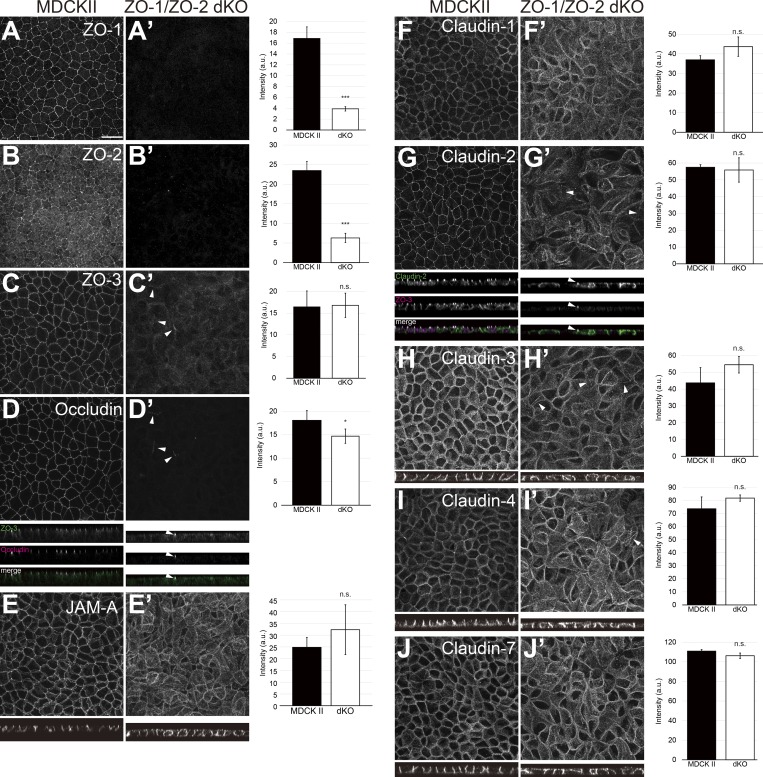Figure 1.
ZO-1/ZO-2 are required for apical junction localization of TJ proteins. (A–J) Immunofluorescence analyses of parental MDCK II cells (A–J) and ZO-1/ZO-2 dKO cells (A′–J′). (A and B) ZO-1 (A) and ZO-2 (B) expression was abolished in ZO-1/ZO-2 dKO cells. (C–J) TJ markers including ZO-3 (C), occludin (D), JAM-A (E), claudin-1 (F), claudin-2 (G), claudin-3 (H), claudin-4 (I), and claudin-7 (J) were not concentrated to the apical junctions in ZO-1/ZO-2 dKO cells, and JAM-A (E) and claudins (F–J) were diffusely localized along the lateral and apical plasma membrane. Occasional apical junction accumulation of occludin and claudins, but not JAM-A was observed (arrowheads), colocalizing with ZO-3 (z-sections in D and G). Graphs are quantitation of the fluorescence intensity and represent mean ± SD (n = 2–9). *, P < 0.05; ***, P < 0.0005, compared by t test. Scale bar: 20 µm. n.s., not significant.

